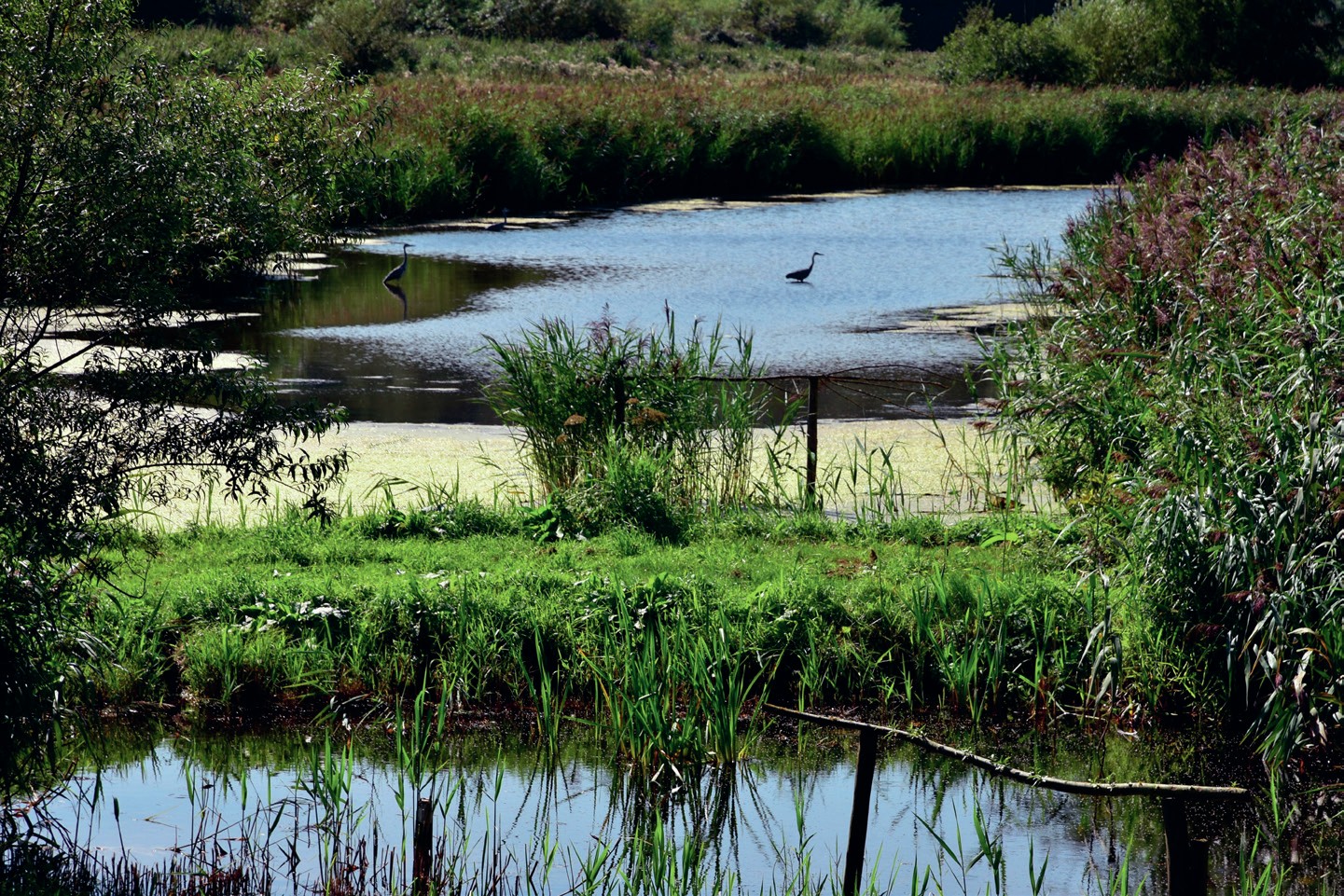
Let’s look at the wildlife found in the ‘dragonfly ponds’ at Rodley Nature Reserve and the interrelationships between organisms found in these small pond environments. Although small, there is a wide range of plants and animals in this ecosystem including plants (producers) such as duck weed, primary consumers such as tadpoles and water fleas, and secondary consumers including small fish such as stickleback. Have a look at the food web (Figure 1, below) to see the interrelationships within this pond ecosystem.
Now, let’s zoom into a contrasting ecosystem on the same site — the woodland coppice. This area includes trees such as willow and hazel, which have been managed using an ancient technique called coppicing. This involves cutting the tree and its branches to ground level, and opening up the woodland floor to sunlight, allowing other plant species to grow. This practice also increases the lifespan of trees as they will grow back slowly, creating a dense understory as coppicing promotes growth of more shoots and branches. This creates good nesting sites for birds such as willow warblers, and burrows for small mammals such as wood mice, as well as dens for larger mammals such as foxes. All of these animals are found in the woodland at Rodley Nature Reserve.
Your organisation does not have access to this article.
Sign up today to give your students the edge they need to achieve their best grades with subject expertise
Subscribe



